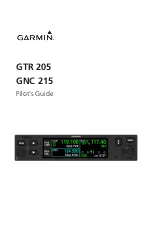
Page 20
The glide ratio is the ratio between the glider’s horizontal speed and the sink rate. To find the best glide rate
on the graph, it is necessary to draw a straight line from the origin of the graph (point O) tangent of the curve.
The intersection of the tangent with the curve (point B) shows the speed to fly at to achieve the best glide (air
related) is therefore VB and the glide ratio is VB/SinkB.
On your Digifly AIR you can insert three different polars using the function (ADVANCED SETUP \ n. 10 - 18 Px-
A/B/C). To choose which polar to use, go to (ADVANCED SETUP \ n. 9 POLA).
If this parameter (ADVANCED SETUP \ n. 6 POLA) is set to “OFF”, all information relating to McCready,
McCready Equivalent, and Netto Vario are not displayed on the instrument.
On the instrument there are three preloaded polars, (2 for hang gliders and 1 for a paraglider). Using the
Digifly AirTool software, available on the Digifly web site (
www.digifly.com
), it is possible to see the values of
the three default polars and to set your own polar.
We suggest that you insert your own polar curve data which best reflects the actual performance of your
glider.
6.3
SPEED TO FLY (WITH OPTIONAL PITOT TUBE)
If this parameter (ADVANCED SETUP \ n. 9 POLA) is set to “OFF”, all information
related to McCready, McCready Equivalent, and Netto Vario are not displayed
on the instrument.
Speed to Fly (STF) is the best anemometric speed to obtain the best glide ratio.
This value depends on performance of your glider as well as vertical and
horizontal airflow. In calm air, the optimum flying speed is the same as the best
glide speed (point B).
The diagram shows different values of speed to fly value related to different
flight conditions
The X-axis shows horizontal speed, the Y-axis shows sink rate. With head wind or sink conditions, the best
glide speed increases. In order to find the optimum speed to fly value in sink conditions, add the sink rate of
the air to the polar of your glider, drawing a new polar and a new tangent line from the initial point of axes.
The new tangent (point D) meets the polar at the point giving a higher optimum flying speed VD.
To fly at the correct “Speed to fly” you have to adjust your anemometric speed “IAS” to overlap the triangle
symbol with the numeric value of the optimal anemometric speed.
Speed to Fly
Optimal STF
indicator
position
















































